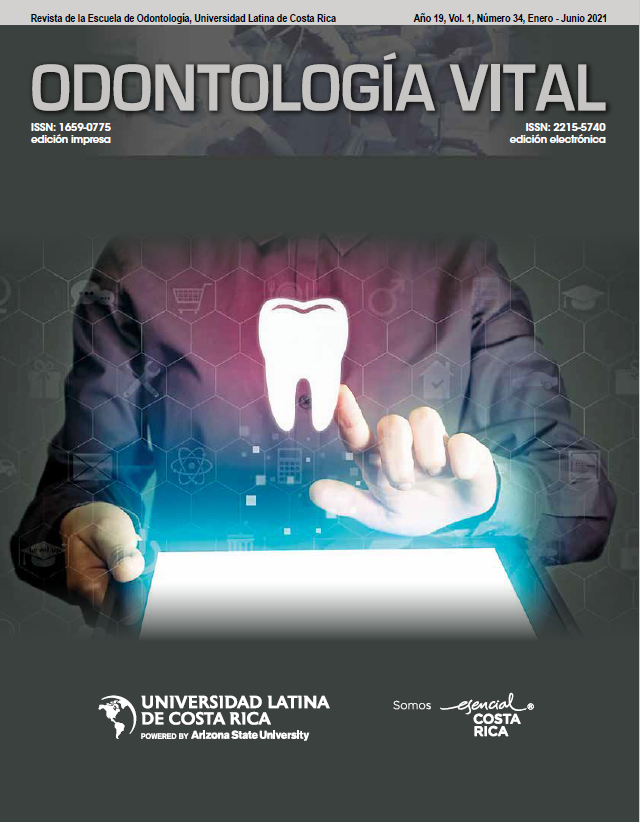Clinical-microbiological vigilance of a C Grade Periodontitis Stage III in five years
DOI:
https://doi.org/10.59334/ROV.v1i34.423Keywords:
Periodontal disease, oral microbiology, periodontal debridement, therapeutics.Abstract
Introduction: There are several techniques to treat and maintain teeth affected by stage III, grade C
periodontitis, nonetheless, the scientific evidence available on how periodontal clinical parameters
and microbiological composition may be modified during the conventional and surgical treatment is
scarce. Objective: to evaluate the clinical and microbiological response of a patient with stage III grade
C, generalized periodontitis, during 5 years, treated with non-surgical and surgical periodontal therapy
using regenerative material and bone substitute. Methodology: The patient was treated with scaling and
progressive root planning, combined with antibiotics and surgical therapy was performed in sites with
infraosseous defects. At each time of treatment, subgingival bacterial plaque (PB), haemorrhage (H), probing
depth (PD) and clinical attachment level (CAL) were recorded. To identify periodontal bacteria by molecular
biology samples were taken with endodontic cones from the pocket depth. Results: a significant difference
of PB, H, PD was observed. The PD decreased and CAL was gained throughout the treatment. PD decreased
5 mm with the application of bone substitute, and CAL gained 5 mm, with the use of amelogenins the
difference of PD and CAL was 4.5 mm. In access flap the PD decreased 3 mm and the CAL improved 2 mm. T.
denticola was identified at 36 months in all pockets treated with access flap and in 50% of the pockets with bone
graft, and P. gingivalis at 60 months. Conclusions: The periodontal treatment applied prevented the loss
of the affected teeth. Improvement of clinical parameters was associated with a non-aggressive microbiota.
Downloads
Published
How to Cite
License
Copyright (c) 2021 Odontología Vital

This work is licensed under a Creative Commons Attribution 4.0 International License.
Authors who publish with Odontología Vital agree to the following terms:
- Authors retain the copyright and grant Universidad Latina de Costa Rica the right of first publication, with the work simultaneously licensed under a Creative Commons Attribution 4.0 International license (CC BY 4.0) that allows others to share the work with an acknowledgement of the work's authorship and initial publication in this journal.
- Authors are able to enter into separate, additional contractual arrangements for the non-exclusive distribution of the Odontología Vital's published version of the work (e.g., post it to an institutional repository or publish it in a book), with an acknowledgement of its initial publication.
- Authors are permitted and encouraged to post their work online (e.g., in institutional repositories or on their website) prior to and during the submission process, as it can lead to productive exchanges, as well as earlier and greater citation of published work.
Métricas alternativas











